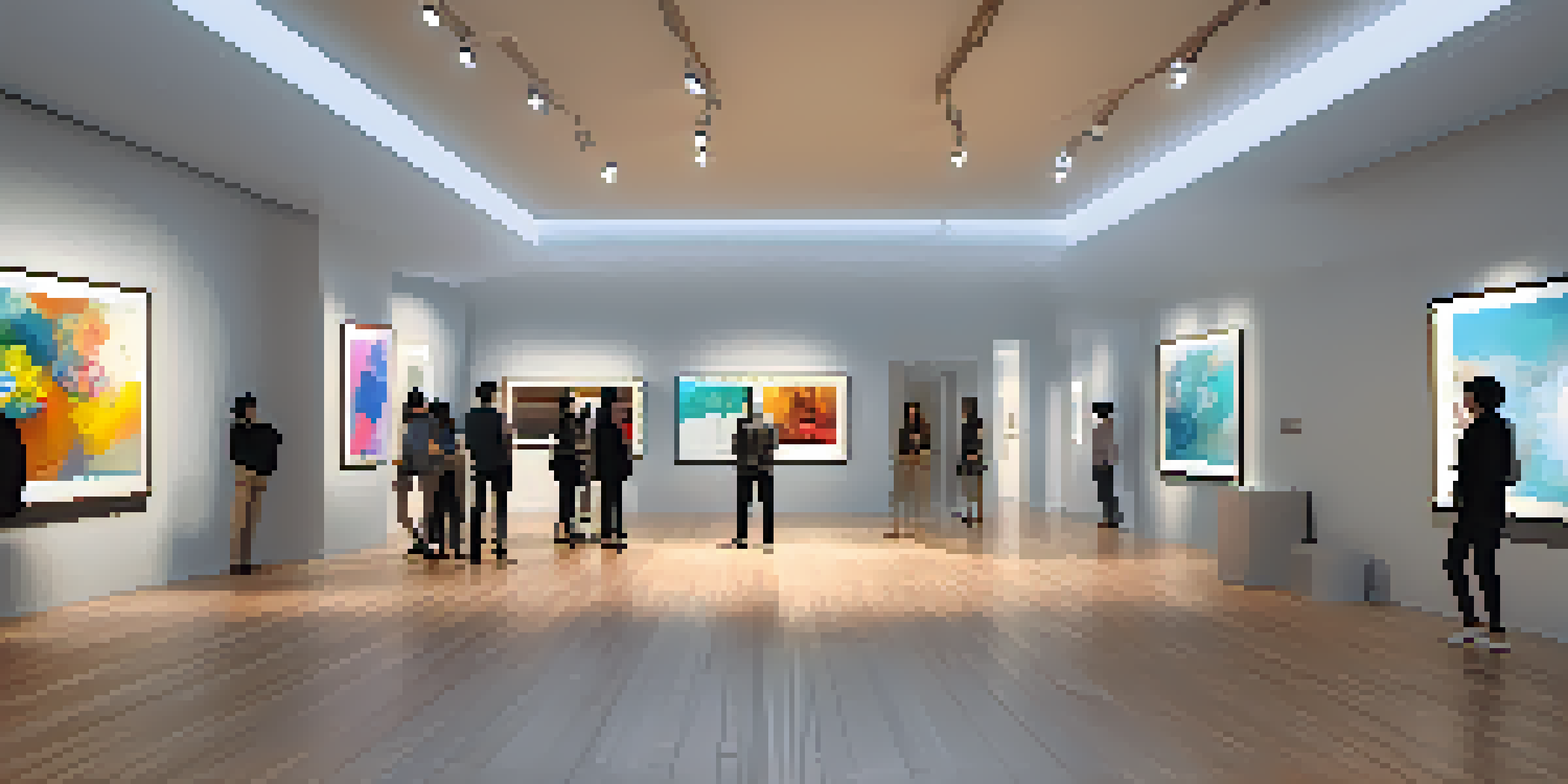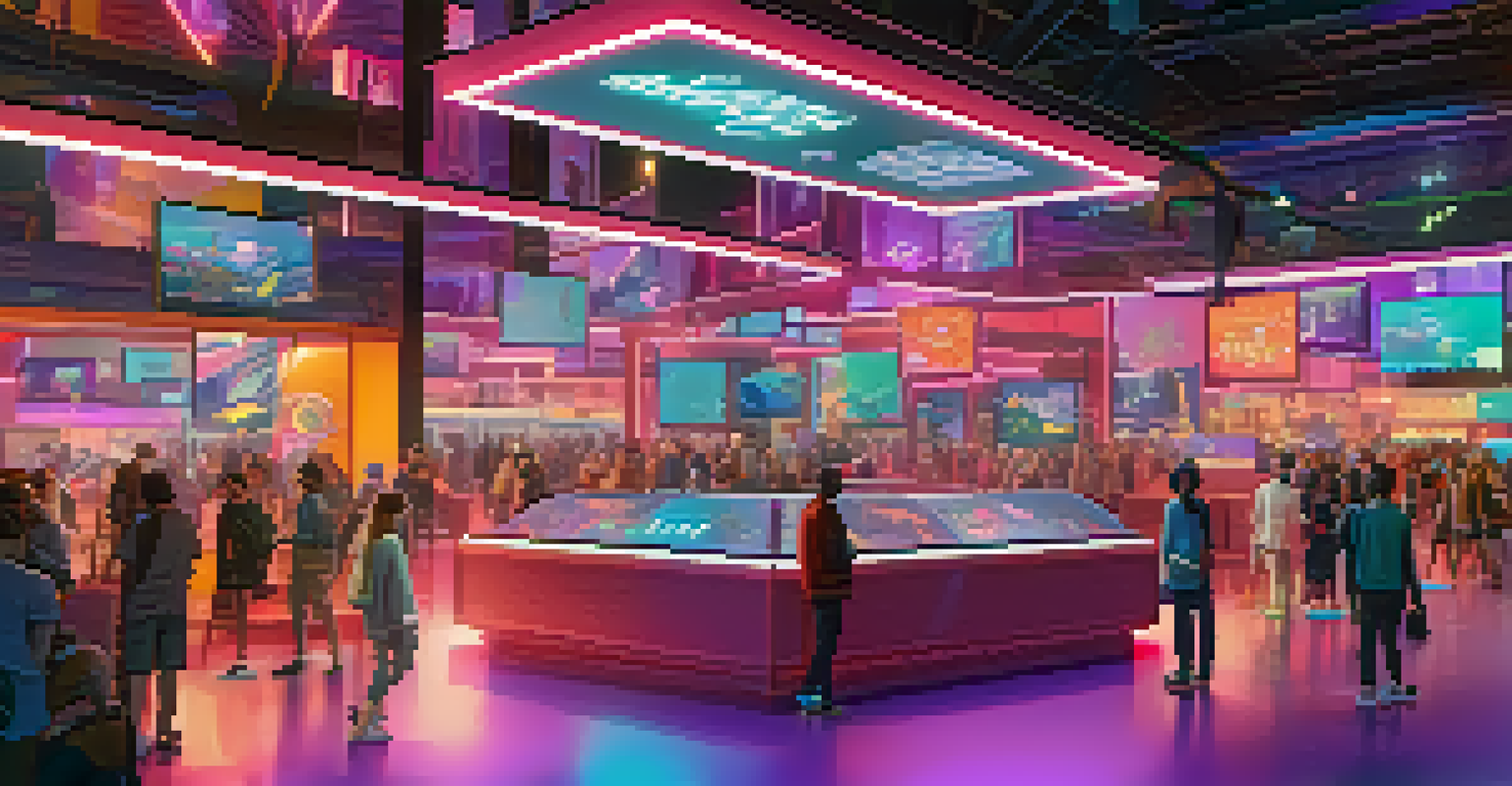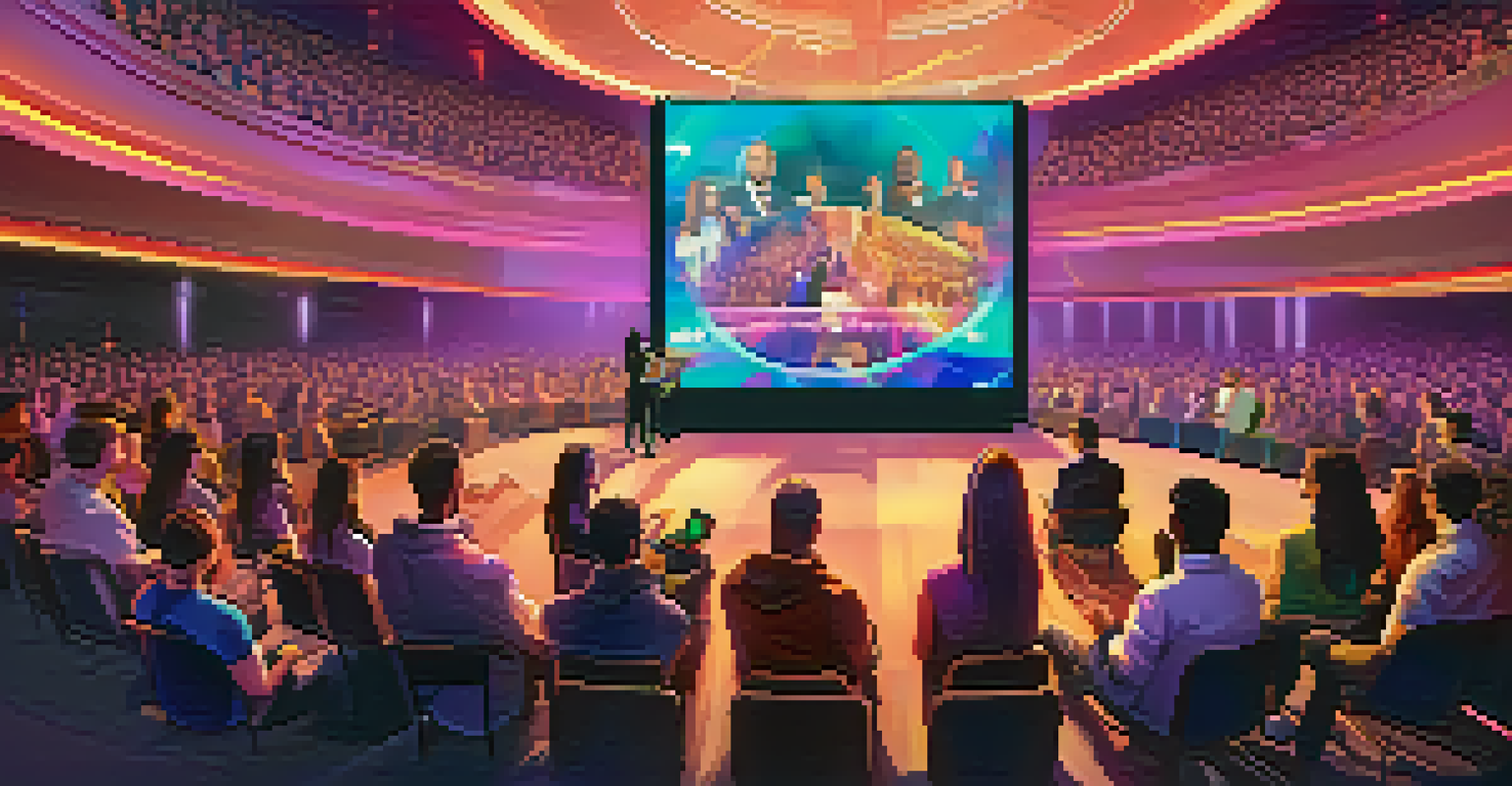Creating Communities Around NFTs in Virtual Reality Spaces

Understanding NFTs and Virtual Reality Basics
NFTs, or non-fungible tokens, are unique digital assets verified using blockchain technology. They can represent anything from art to virtual real estate, giving them a distinct value. Virtual reality (VR), on the other hand, immerses users in a digital environment, making interactions feel more real and engaging.
The future of the internet is not just about technology, but about the communities we build around it.
Combining NFTs with VR creates a unique opportunity for community building. Imagine stepping into a virtual gallery where you can not only view but also purchase digital art as NFTs. This blend enhances the experience, making it more interactive and social.
As we explore this fusion further, it's essential to grasp how these technologies can work together. By understanding their individual strengths, we can better appreciate the potential for creating dynamic communities within virtual spaces.
Creating Engaging Virtual Spaces for Communities
The first step in building a community around NFTs in VR is to create an engaging virtual space. This could be a gallery, a marketplace, or even a social hub where users can interact. The design should invite exploration and encourage user participation.

For instance, platforms like Decentraland allow users to create their own spaces filled with NFTs, enabling them to host events or exhibitions. These environments can foster connections among users who share similar interests, creating a sense of belonging.
NFTs and VR Enhance Community Building
Combining NFTs with virtual reality creates interactive spaces that foster connections and engagement among users.
By prioritizing user experience and interactivity, these virtual spaces can become thriving communities. The more engaging the environment, the more likely users will return and invite others to join, enhancing the community's growth.
Leveraging Social Media for Community Growth
Social media acts as a powerful tool for promoting NFT communities in VR. Platforms like Twitter, Discord, and Instagram can help spread the word about upcoming events or new NFT releases. They allow creators to engage with potential community members before they even step into the virtual space.
In the world of art, the story behind the piece is just as important as the piece itself.
For example, using Twitter Spaces for live discussions about upcoming NFT drops can generate excitement and anticipation. Sharing behind-the-scenes content on Instagram can also create a personal connection, making users feel more involved.
By leveraging these platforms effectively, creators can draw in a diverse audience, eager to join the community. This pre-engagement can significantly boost attendance and participation in the VR space.
Hosting Events to Foster Community Interaction
Events play a crucial role in nurturing community. From virtual art shows to NFT auctions, hosting events can bring users together, providing them with shared experiences. These gatherings not only showcase NFTs but also encourage discussions and networking.
Consider organizing a themed event where users can showcase their NFTs and share the stories behind them. This not only highlights individual creativity but also fosters deeper connections among attendees. People love to connect over shared interests, and events can facilitate that remarkably well.
Social Media Boosts Community Growth
Utilizing platforms like Twitter and Instagram helps creators promote events and engage potential community members effectively.
Additionally, incorporating gamification elements, such as contests or scavenger hunts, can further enhance engagement. By creating fun and interactive experiences, communities can thrive and grow organically.
Building Trust and Authenticity in Communities
Trust is the cornerstone of any successful community, especially in the NFT space. Transparency about the creation and ownership of NFTs is vital. Users need to feel confident that they are engaging with genuine creators and not falling prey to scams.
To build trust, creators should share their stories, backgrounds, and processes. Engaging in open discussions about the value of NFTs and the technology behind them can demystify the space for newcomers. This approach fosters an environment of authenticity and reliability.
Moreover, encouraging community members to share their experiences can further enhance trust. Testimonials and shared stories can create a sense of camaraderie, making the community feel more secure and welcoming.
Utilizing Feedback to Improve Community Experience
Feedback is invaluable for community growth and improvement. Actively seeking input from community members can provide insights into their needs and preferences. This not only helps in refining the VR space but also shows users that their opinions are valued.
For instance, after hosting an event, asking participants for their thoughts on what worked and what didn't can guide future planning. Creating surveys or holding feedback sessions can be effective ways to gather this information.
Trust is Key in NFT Communities
Building trust through transparency and shared experiences is essential for creating a secure and welcoming environment for users.
By implementing changes based on feedback, communities demonstrate adaptability and responsiveness. This approach can significantly enhance user satisfaction and encourage long-term engagement.
Exploring Future Trends in NFT Communities
As technology evolves, so will the landscape of NFT communities in VR. Emerging trends, such as augmented reality (AR) and artificial intelligence (AI), could further enhance these experiences. Imagine AI-driven avatars leading users through virtual galleries or AR overlays that provide additional information about NFTs.
Keeping an eye on these trends will allow community creators to stay ahead of the curve. By embracing new technologies, they can continue to provide innovative and engaging experiences that attract users.

Ultimately, the future of NFT communities in virtual reality looks bright. With continuous development and creativity, these spaces can become even more vibrant and inclusive, allowing for endless possibilities.